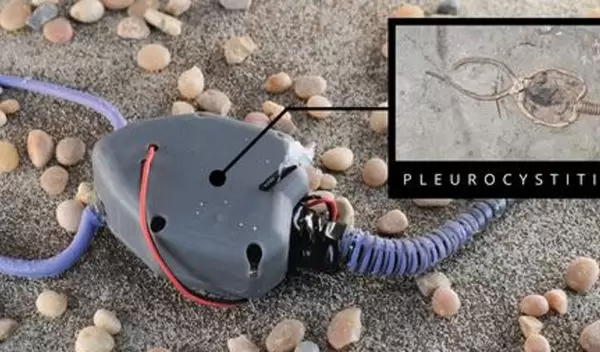
450 million-year-old organism finds new life in softbotics
Researchers at Carnegie Mellon University, in collaboration with paleontologists from Spain and Poland, used fossil evidence to engineer a soft robotic replica of a pleurocystitid, a marine organism that existed nearly 450 million years ago and is believed to be one of the first echinoderms capable of movement using a muscular stem.
Published in Proceedings of the National Academy of Sciences, the U.S. National Science Foundation-supported research seeks to broaden modern perspective of animal design and movement by introducing a new a field of study — paleobionics — aimed at using softbotics, robotics with flexible electronics and soft materials, to understand the biomechanical factors that drove evolution using extinct organisms.
"Bringing a new life to something that existed nearly 500 million years ago is exciting in and of itself."
- Mechanical engineer and study co-author Phil LeDuc
"Softbotics is another approach to inform science using soft materials to construct flexible robot limbs and appendages," said Carmel Majidi, the lead author of the study. "Many fundamental principles of biology and nature can only fully be explained if we look back at the evolutionary timeline of how animals evolved. We are building robot analogues to study how locomotion has changed."
With humans' time on earth representing only 0.007% of the planet's history, the modern-day animal kingdom that influences understanding of evolution and inspires today's mechanical systems is only a fraction of all creatures that have ever existed.
Using fossil evidence to guide their design and a combination of 3D-printed elements and polymers to mimic the flexible columnar structure of the moving appendage, the team demonstrated that pleurocystitids were likely able to move over the sea bottom using a muscular stem to push themselves forward. Despite the absence of a current day equivalent, — echinoderms have since evolved to include modern day starfish and sea urchins — pleurocystitids have been of interest to paleontologists due to their pivotal role in echinoderm evolution.
The researchers determined that wide sweeping movements were likely the most effective motion and that increasing the length of the stem significantly increased the animals' speed without forcing it to exert more energy.
Now that the researchers have demonstrated that they can use softbotics to engineer extinct organisms, they hope to explore other animals, like the first organism that could travel from sea to land — something that can't be studied in the same way using conventional robot hardware.
"Bringing a new life to something that existed nearly 500 million years ago is exciting in and of itself," said mechanical engineer and study co-author Phil LeDuc. "But we aren't just looking at fossils in the ground, we are trying to better understand life through working with paleontologists."
